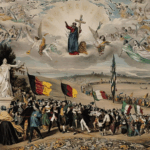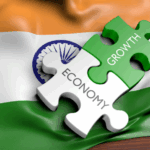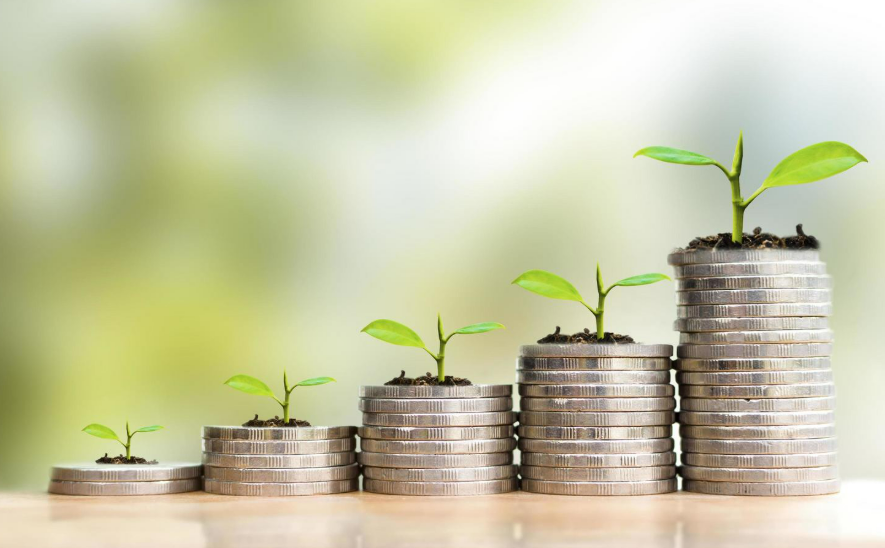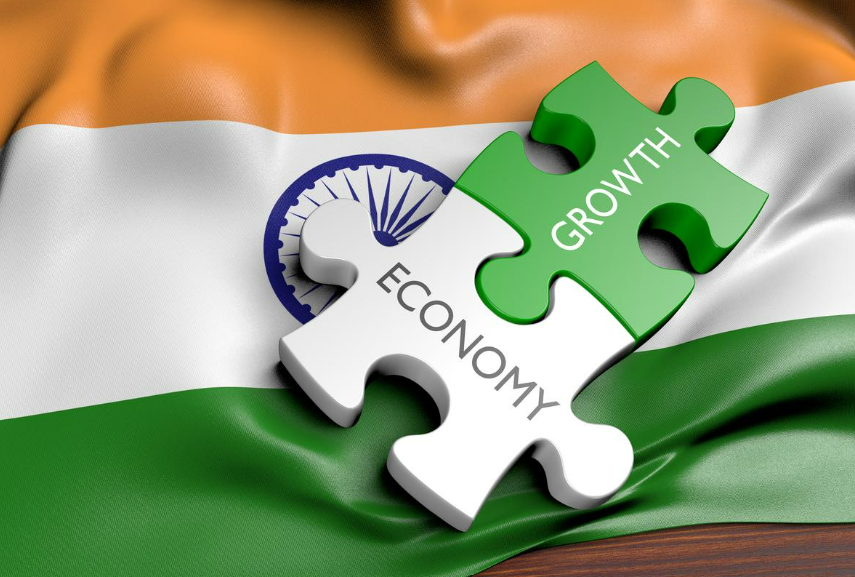Human progress is measured not only by economic growth but also by improvements in living standards, education, healthcare, and overall well-being. It reflects how societies transform over time, providing better opportunities and quality of life for their citizens. Economic and social progress is reflected in how a nation improves the quality of life of its citizens, increases access to education, healthcare, and employment opportunities, and ensures overall well-being.
Everyone dreams of a better future- some want a good job, others want security, and some value freedom and respect. In the same way, every country aims for growth and progress. But development is not he same for everyone. This chapter explores how people and nations define development in different ways.
Introduction
1. Meaning of Development:
- Development refers to improvement in the quality of life and progress in different aspects of society.
- It is about going beyond income growth; it includes social, cultural, political and economic dimensions.
- It is a comprehensive term- different people have different developmental goals.
2. Developmental Goals:
- Different people have different developmental goals.
- Example:
1) Farmers- better price for crops, irrigation facilities.
2) Industrialists- cheap raw materials, more profits.
3) Workers- better wages, job security. - Common goals: Freedom, Equality, Security, Respect, Sustainable use of resources.
3. Key aspects of development:
- Income (higher standard of living, purchasing power).
- Education (literacy, knowledge, etc.).
- Health (better life expectancy, nutrition, medical facilities).
- Freedom (to make choices without discrimination).
- Security (against unemployment, poverty, exploitation).
4. Different perspective:
- Development is not the same for everyone.
- Conflict of interests: One group’s development may cause harm to others.
- Example: Industrial projects may benefit some but displace local people.
Topic-1: Different People, Different Goals
1. Development is subjective:
- It has different meanings for different people.
- What may be development for one can be destructive for another.
2. Examples of different goals:
- Farmer (landless labourers): More days of work, better wages, social equality.
- Farmer (prosperous): Assured high family income, availability of cheap labour.
- Adolescent girl: Freedom, opportunity to study, gender equality.
- Old person: Security of life, companionship, medical facilities.
- Industrialists: More profit, better market opportunities.
3. Conflicting Goals:
- Some goals may clash with each other.
- Example:
1) Industrialist wants cheap labour.
2) Workers want higher wages and secure jobs.
4. Common Goals:
Despite differences, people share some universal developmental goals such as:
- Freedom
- Security
- Equal treatment
- Respect and dignity
- Better environment
- Opportunities for education and healthcare
Topic-2: Income and Other Goals
1. Importance of Income:
- People view income as the most important component.
- With higher income, they can buy goods and services to improve living standards.
- Government often use per capita income to compare development among countries.
2. Income alone is not enough:
- Income is not the only goal people want.
- Along with money, people seek other things for a better quality of life.
- Example:
1) A job with high pay but no security may not be preferred.
2) A job with slightly less pay but with job security, respect, and freedom may be better.
3. Non-Material Goals:
- Equality and dignity
- Security of life
- Freedom and Respect
- Good working conditions
- Peaceful environment
- Friendship and community support
4. Key Point:
- Development is not about income.
- Both material goals (income, wealth) and non-material goals (freedom, equality, justice) are essential for overall development.
Topic-3: National Development
1. Meaning:
- National development means the overall growth and improvement of a country.
- Development includes following aspects:
1) Economic – (income, production, employment).
2) Social – (education, health, equality).
3) Political – (democracy, justice, equality).
2. Different Perspectives:
- Just like individuals, different people may have different ideas of National Development.
- Example:
1) Industrialists: more industries, profit-earning.
2) Environmentalists: protection of natural resources.
3. Comparison of countries
- To measure National Development, countries are often compared using:
- National income (total income of the country).
- Per-capita income (average income per person).
- However, income alone does not show true development.
4. Important aspects of National Development
- Rising per capita income.
- Equality and justice.
- Improved health and education.
- Sustainable use of resources.
- Freedom and security for citizens.
Topic-4: How to Compare Countries?
1. Need for comparison:
- Comparison helps to understand which country/state is more developed.
- Development cannot be judged by just looking at total income because:
- Countries have different populations.
- Higher total income doesn’t always mean better standard of living.
2. Per-capita income:
- Per-capita income= Total income of the country ÷ Total population
- It shows average income per person.
- Used by the World Bank to classify countries:
- Rich/Developed countries- High per capita income.
- Poor/Developing countries- Low per capita income.
3. Limitations of Per-Capita income:
- Per capita income does not show income distribution (rich v/s poor gap).
- It ignores other developmental aspects like health, education, equality, environment.
4. Other indicators of Comparison:
- Literacy Rate- shows educational level.
- Infant Mortality Rate (IMR)- reflects health and medical facilities.
- Life Expectancy- average years a person is expected to live.
- Net Attendance Ratio- participation in education.
Topic-5: Income and Other Criteria
1. Income as a measure:
- Income is an important criterion for comparing nations.
- Per capita income is commonly used to compare countries and states.
- Higher income generally indicates better opportunities for living.
2. Limitations of income:
- Income does not show:
1) Distribution of income (rich v/s poor gap).
2) Quality of life (education, health, security).
3) Social equality and justice.
3. Other important criterion for development:
- Health indicators:
1) Infant Mortality Rate (IMR)- number of children dying before completing the age of 1 year.
2) Life Expectancy- average years a person is expected to live. - Education indicators:
1) Literacy Rate- percentage of literate population.
2) Net Attendance Ratio- percentage of children attending school in a particular age group. - Equality and Freedom:
Equal treatment, dignity, job security, protection from discrimination. - Environmental Sustainability:
Use of natural resources without harming future generations.
4. Example of Comparison:
- A state with high per capita income but poor health/education facilities cannot be considered fully developed.
- On the other hand, a state with moderate income but better education, health and equality may provide a higher quality of life.
Topic-6: Public Facilities
1. Meaning:
- Public facilities are services provided by the government for the welfare of all citizens.
- They are available to everyone, often either free of cost or at a very low cost.
- They ensure collective development and improve quality of life.
2. Importance of public facilities:
- Income alone cannot guarantee a good standard of living.
- Example:
1) A person may have high income but still cannot buy pure drinking water if it’s not available. - Public facilities are therefore essential.
3. Examples of public facilities:
- Education- Schools, Colleges, Literacy programmes.
- Health- Hospitals, Vaccination centres, Sanitation facilities.
- Transport and Communication- Roads, Railways, Public Transports, Postal Services.
- Water and Electricity- Safe drinking water supply, electricity for households.
- Other facilities- Public Distribution System (Ration Shops), law and order, pollution control, parks, etc.
4. Public v/s Private Facilities:
- Some services like electricity and education may be provided by private companies but at a high cost.
- Poor and middle class families depend more on public facilities.
- Without strong public facilities, only the rich benefit, while the poor remain deprived.
Topic-7: Sustainable Development
1. Meaning:
- Sustainable Development means development without harming the environment and ensuring resources for future generations.
- Present needs should be fulfilled without reducing the ability of future generations to meet their needs.
2. Why is it important?
- Overuse of resources- leads to scarcity for future.
- Industrialisation, deforestation and pollution- damages environment.
- Example: Groundwater depletion, climate change.
3. Features:
- Use Resources wisely (not over-exploitation).
- Promote renewable resources (solar, wind, hydro).
- Maintain ecological balance (trees, clean air, biodiversity).
- Balance between economic growth and environmental protection.
Body Mass Index (BMI):
1. Meaning:
- BMI is a method to find out whether a person is underweight, healthy or overweight.
- Formula:
BMI= Weight in kg ÷ Height in (m)^2
2. Interpretation (as per WHO standards):
- Below 18- Undernourished
- Between 18 and 25- Healthy/Nourished
- Above 25- Overweight
Conclusion
Development is a multi-dimensional concept. It cannot be measured only by income or wealth, but must also include health, education, equality, dignity and environmental sustainability. Different people may have different developmental goals. The concept focuses on enhancing the quality of life and ensuring equitable access to resources, opportunities, and services for everyone in society.
A country’s progress is judged not only by it’s per capita income but also by indicators such as literacy rate, life expectancy, infant mortality rate and access to public facilities. Moreover, development should be sustainable, so that future generations can also enjoy the benefits of natural resources. A country’s growth and advancement can be seen in rising living standards, reduction in poverty, and the ability of people to fulfill their basic needs and aspirations.
Human progress is not just about increasing wealth; it is about providing better education, healthcare, infrastructure, and social opportunities to all sections of society. Societal improvement involves creating conditions where people can lead healthier, more secure, and fulfilling lives while contributing to economic activities.
Full Chapter Explanation
Detailed notes of other chapters:
Sectors of Indian Economy: Class 10th Economics Chapter-2 ( Easy NCERT Notes )
Money And Credit: Class 10th Economics Chapter-3 ( Easy NCERT Notes )






